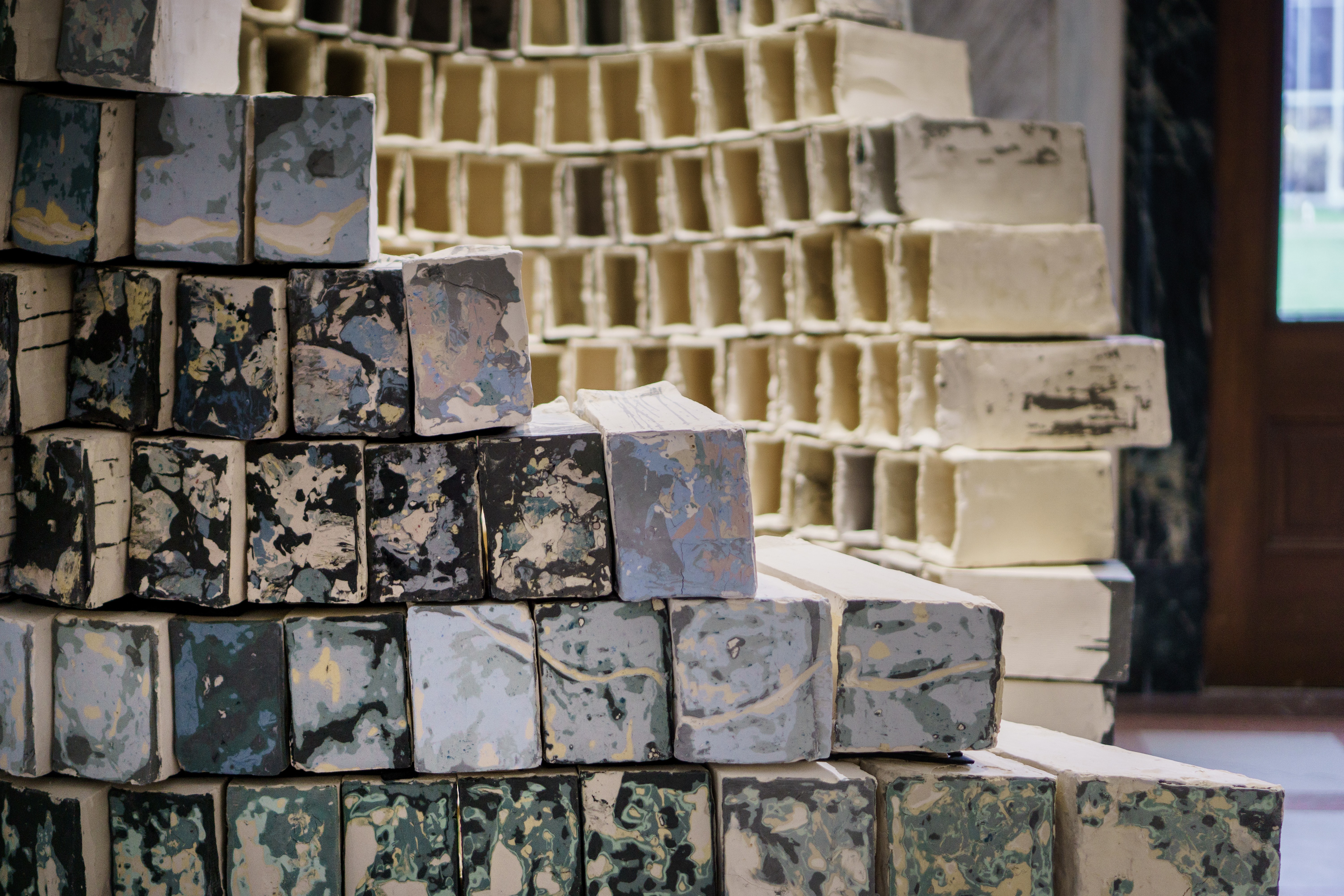Exhibited in Syracuse University, New York; Mcgill University, Montreal
Curator & Lead: Linda Zhang
Designed and built in collaboration with:
Linda Zhang, Sabrina Logrono, Olivia Binette, Dante Antonio, Sarah Beaudoin, Maddie Laberge, Amanda Liberty, Natasha Liston-Beck, Remi Mcclain, Biko Mandela Gray, Birani Nyayat,
Virginia Paulk, Emma Stoll, Elena Echari Meyers, Hannah Michaelson
Linda Zhang, Sabrina Logrono, Olivia Binette, Dante Antonio, Sarah Beaudoin, Maddie Laberge, Amanda Liberty, Natasha Liston-Beck, Remi Mcclain, Biko Mandela Gray, Birani Nyayat,
Virginia Paulk, Emma Stoll, Elena Echari Meyers, Hannah Michaelson
Led by Boghosian Fellow, Linda Zhang, the exhibition was the culmination of a semester-long project. The Beta-Real Exhibition suggests a beta version that is still in development, always shifting and still unstable. The work itself is a series of relays, between the tangible and the intangible, between what is casted and the mold. Through the process of ceramic slip-casting and excavating, memories and identities are mediated into the material itself. The installation on the right is a relay of the Erie Canal Monument, found on Erie Boulevard, Syracuse.
In collaboration with Sabrina Logrono, we designed, slip-casted, and excavated row 08 and row 09 of the monument, addressing issues of ownership in the Erie Canal. When it comes to the Erie Canal, ownership is a contested term. The project was commissioned by the New York State Canal Corporation, so they are named the principal owners. However, during the construction of the canal, land belonging to Native Americans was taken over. Additionally, the people who built the canal were not originally from America but from Ireland. On a large scale, this exploitation of land and labor calls into question the consequences of American progress and at a local scale, it draws attention to the muddled definition of ownership.
In this project, our actions on the slip seek to illustrate the emerging of the buried truth of tension. The fight over ownership between the multiple sides is hidden under the glory of American progress, but it is pushing to be revealed. We took the digital fragments of the neighboring buildings that were also built by immigrants and embedded them into the monument. A “folding back” occurs as the fragments start to emerge from the shell of the monument while the monument concurrently continues to suppress them. In a way, what we are trying to create is a reverse geode. The outside seems perfect, but it hides an imperfect history.


row 08 & 09